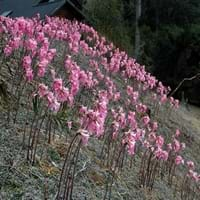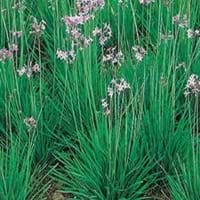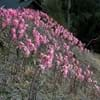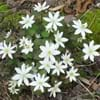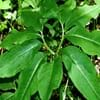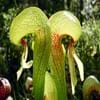Type
Bulb or Corm or Tuber
Bulb or Corm or Tuber
Origin
South Africa
South Africa
Types
Barberton, Cape Town, Elator
Not Available
Number of Varieties
Not Available
Habitat
Warmer regions
Tropical regions, Well Drained, Wet forest
USDA Hardiness Zone
6-10
7-11
Habit
Clump-Forming
Clump-Forming
Flower Color
Pink, Rose
White, Light Pink, Lavender
Flower Color Modifier
Bicolor
Bicolor
Fruit Color
Not Available
Yellow green
Leaf Color in Spring
Dark Green
Blue Green, Gray Green
Leaf Color in Summer
Light Green
Light Green
Leaf Color in Fall
Several shades of Green
Several shades of Green
Leaf Color in Winter
Light Green
Light Green
Leaf Shape
Narrow
Long Narrow
Plant Season
Summer
Summer
Sunlight
Full Sun, Partial Sun, Partial shade
Full Sun
Growth Rate
Medium
Medium
Type of Soil
Loam, Sand
Loamy, Well drained
The pH of Soil
Acidic, Neutral
Neutral
Soil Drainage
Well drained
Well drained
Bloom Time
Summer, Late Summer
Early Summer, Summer
Tolerances
Drought
Dry soil, Shade areas
Where to Plant?
Container, Ground, Pot
Ground
How to Plant?
Seedlings
Budding, From bulbs
Plant Maintenance
Medium
Low
Watering Requirements
Average Water Needs, Do Not over Water, Requires regular watering
Keep ground moist, Never Over-water
In Summer
Lots of watering
Moderate
In Spring
Moderate
Average Water
In Winter
Average Water
Less Watering
Soil pH
Acidic, Neutral
Neutral
Soil Type
Loam, Sand
Loam, Sand
Soil Drainage Capacity
Well drained
Well drained
Sun Exposure
Full Sun, Partial Sun, Partial shade
Full Sun
Pruning
Remove damaged leaves, Remove dead branches, Remove dead leaves
Cut out old flower stalks, Prune ocassionally
Fertilizers
All-Purpose Liquid Fertilizer
fertilize in fall, Nitrogen
Pests and Diseases
Red blotch
Bacterial leaf spot, Nematodes, Purple Blotch, Red blotch, Seedcorn maggot
Plant Tolerance
Drought
Dry soil, Shade areas
Flower Petal Number
Single
Single
Fragrant Bark/Stem
No
Yes
Foliage Texture
Medium
Medium
Foliage Sheen
Glossy
Matte
Attracts
Butterflies, Hummingbirds
Bugs, Flying insects, Insects
Allergy
Abdominal pain, Depression, Diarrhea, Toxic, Vomiting
Dermatitis, Pain and fatigue
Aesthetic Uses
Showy Purposes
Showy Purposes, Used in parkland
Beauty Benefits
Not Available
Acne, For treating wrinkles, Making cosmetics, Removes pimples
Edible Uses
Insignificant
Yes
Environmental Uses
Air purification
Indoor Air Purification, Insect Repellent
Medicinal Uses
Not Available
Acne, Aging, Antidepressant, epilepsy, Nerve pain, Obesity, Vomiting
Part of Plant Used
Flowers
Bulbs
Other Uses
Showy Purposes
Animal Feed, Can be made into a herbal tea, Oil is used in mosquito repellents, Use in Chinese herbology, Used as Ornamental plant, Used for its medicinal properties
Used As Indoor Plant
Insignificant
No
Used As Outdoor Plant
Yes
Yes
Garden Design
Container, Cutflower, Feature Plant, Houseplant, Mixed Border, Rock Garden / Wall
Edible, Herb / Vegetable
Botanical Name
AMARYLLIS belladonna
TULBAGHIA violacea
Common Name
August Lily, Belladonna Lily, Naked Lady
Society Garlic
In Hindi
Belladonna Lily plant
लहसुन
In German
Belladonna Lily Pflanze
Knoblauch
In French
Belladonna Lily plante
Ail
In Spanish
planta de lirio de belladona
Ajo
In Greek
φυτό Belladonna Lily
σκόρδο
In Portuguese
planta Belladonna Lily
alho
In Polish
Belladonna Lily roślin
czosnek
In Latin
Lilium planta belladonna
allium
Phylum
Magnoliophyta
Magnoliophyta
Class
Liliopsida
Liliopsida
Family
Amaryllidaceae
Liliaceae
Clade
Angiosperms, Monocots
Monocotyledonous
Tribe
Not Available
Not Available
Subfamily
Amaryllidoideae
Lilioideae
Number of Species
Not Available
Properties of Belladonna Lily and Society Garlic
Wondering what are the properties of Belladonna Lily and Society Garlic? We provide you with everything About Belladonna Lily and Society Garlic. Belladonna Lily doesn't have thorns and Society Garlic doesn't have thorns. Also Belladonna Lily does not have fragrant flowers. Belladonna Lily has allergic reactions like Abdominal pain, Depression, Diarrhea, Toxic and Vomiting and Society Garlic has allergic reactions like Abdominal pain, Depression, Diarrhea, Toxic and Vomiting. Compare all the properties and characteristics of these two plants. Find out which of these plant can be used as indoor plant. If you are interested to decorate your house and garden, find out aesthetic uses, compare them and select the plant which will beautify your surrounding. Along with beautification, try comparing medicinal and edible uses of Belladonna Lily and Society Garlic and you can choose the plant having best and most benefits.
Season and Care of Belladonna Lily and Society Garlic
Season and care of Belladonna Lily and Society Garlic is important to know. While considering everything about Belladonna Lily and Society Garlic Care, growing season is an essential factor. Belladonna Lily season is Summer and Society Garlic season is Summer. The type of soil for Belladonna Lily is Loam, Sand and for Society Garlic is Loamy, Well drained while the PH of soil for Belladonna Lily is Acidic, Neutral and for Society Garlic is Neutral.
Belladonna Lily and Society Garlic Physical Information
Belladonna Lily and Society Garlic physical information is very important for comparison. Belladonna Lily height is 75.00 cm and width 20.00 cm whereas Society Garlic height is 45.70 cm and width 2.00 cm. The color specification of Belladonna Lily and Society Garlic are as follows:
Belladonna Lily flower color: Pink and Rose
Belladonna Lily leaf color: Dark Green
Society Garlic flower color: White, Light Pink and Lavender
- Society Garlic leaf color: Blue Green and Gray Green
Care of Belladonna Lily and Society Garlic
Care of Belladonna Lily and Society Garlic include pruning, fertilizers, watering etc. Belladonna Lily pruning is done Remove damaged leaves, Remove dead branches and Remove dead leaves and Society Garlic pruning is done Cut out old flower stalks and Prune ocassionally. In summer Belladonna Lily needs Lots of watering and in winter, it needs Average Water. Whereas, in summer Society Garlic needs Moderate and in winter, it needs Less Watering.
